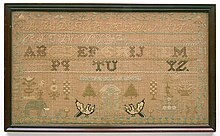
A needlework sampler is a piece of embroidery or cross-stitching produced as a 'specimen of achievement', demonstration or a test of skill in needlework. It often includes the alphabet, figures, motifs, decorative borders and sometimes the name of the person who embroidered it and the date. The word sampler is derived from the Latin exemplum, which means 'example'.

Berlin wool work is a style of embroidery similar to today's needlepoint that was particularly popular in Europe and America from 1804 to 1875. It is typically executed with wool yarn on canvas, worked in a single stitch such as cross stitch or tent stitch, although Beeton's book of Needlework (1870) describes 15 different stitches for use in Berlin work. It was traditionally stitched in many colours and hues, producing intricate three-dimensional looks by careful shading. Silk or beads were frequently used as highlights. The design of such embroidery was made possible by the great progress made in dyeing, initially with new mordants and chemical dyes, followed in 1856, especially by the discovery of aniline dyes, which produced bright colors.

Crewel embroidery, or crewelwork, is a type of surface embroidery using wool. A wide variety of different embroidery stitches are used to follow a design outline applied to the fabric. The technique is at least a thousand years old.

Deerfield is a town in Franklin County, Massachusetts, United States. Settled near the Connecticut River in the 17th century during the colonial era, the population was 5,090 as of the 2020 census. Deerfield is part of the Springfield, Massachusetts Metropolitan Statistical Area in western Massachusetts, lying 30 miles (48 km) north of the city of Springfield.


The Raid on Deerfield, also known as the Deerfield Massacre, occurred during Queen Anne's War on February 29, 1704, when French and Native American raiders under the command of Jean-Baptiste Hertel de Rouville attacked the English colonial settlement of Deerfield, Massachusetts, just before dawn. They burned parts of the town and killed 47 colonists. The raiders left with 112 colonists as captives, whom they took overland the nearly 300 miles to Montreal; some died or were killed along the way because they were unable keep up. Roughly 60 colonists were later ransomed by their associates, while others were adopted by Mohawk families at Kahnawake and became assimilated into the tribe. In this period, English colonists and their Indian allies were involved in similar raids against French villages along the northern area between the spheres of influence.
Frank Learoyd Boyden was headmaster of Deerfield Academy from 1902 to 1968.
Eunice Williams, also known as Marguerite Kanenstenhawi Arosen, was an English colonist taken captive by French and Mohawk warriors from Deerfield, Massachusetts in 1704. Taken to Canada with more than 100 other captives, the seven-year-old girl was adopted by a recently converted Mohawk family at Kahnawake and fully assimilated into Mohawk society. She was baptized as the Catholic "Marguerite" and renamed A'ongonte, meaning "she who has been planted as an ash tree." She eventually married a Mohawk man, François-Xavier Arosen, having several children and remaining with the Mohawk for the rest of her life. While choosing not to return to her natal family, she, along with her children, repeatedly made the trek to Deerfield to visit with her Puritan siblings over the course of her life. Her father, Rev. John Williams and her brother Samuel made numerous efforts to ransom her to no avail. Moreover, they failed to persuade her to return to Massachusetts and her birth family.

English embroidery includes embroidery worked in England or by English people abroad from Anglo-Saxon times to the present day. The oldest surviving English embroideries include items from the early 10th century preserved in Durham Cathedral and the 11th century Bayeux Tapestry, if it was worked in England. The professional workshops of Medieval England created rich embroidery in metal thread and silk for ecclesiastical and secular uses. This style was called Opus Anglicanum or "English work", and was famous throughout Europe.
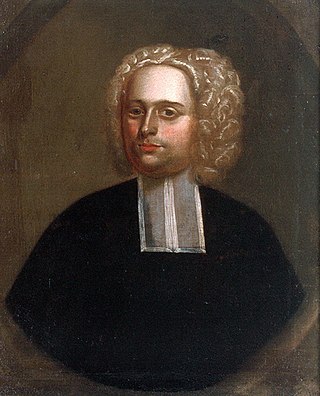
John Williams was a New England Puritan minister who was the noted pastor of Deerfield from 1688 to his death. He and most of his family were taken captive in the Raid on Deerfield in 1704 during Queen Anne's War. He was held by the French in Montreal for more than two years, who wanted a high-ranking French pirate in exchange. After being released in late 1706, Williams became even more notable for The Redeemed Captive (1707), his account of his captivity. It became a well-known work in the genre of captivity narratives.
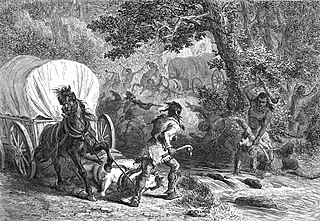
The Battle of Bloody Brook was fought on September 28, 1675 between an indigenous war party primarily composed of Pocumtuc warriors and other local indigenous people from the central Connecticut River valley, and the English colonial militia of the New England Confederation and their Mohegan allies during King Philip's War.

The Mark Twain House and Museum in Hartford, Connecticut, was the home of Samuel Langhorne Clemens and his family from 1874 to 1891. It was designed by Edward Tuckerman Potter and built in the American High Gothic style. Clemens biographer Justin Kaplan has called it "part steamboat, part medieval fortress and part cuckoo clock."

The Deerfield Society of Blue and White Needlework was founded in Deerfield, Massachusetts, in 1896 by Margaret C. Whiting and Ellen Miller. They formed the society in 1896 as a way to help residents boost the town's economy by reviving American needlework from the 1700s. It was inspired by the crewel embroidery of 18th-century women who had lived in the Deerfield, Massachusetts, area. Members of the Blue and White Society initially used the patterns and stitches from these earlier works, but because these new embroideries were not meant to replicate the earlier works, the embroidery soon deviated from the original versions with new patterns and stitches, and even the use of linen, rather than wool, thread. The society disbanded in 1926 for several reasons. Ellen Miller was in declining health; the trained stitchers were getting old and could not continue; Margaret C. Whiting's sight was fading; and, the design and quality of commercially produced items was increasing.
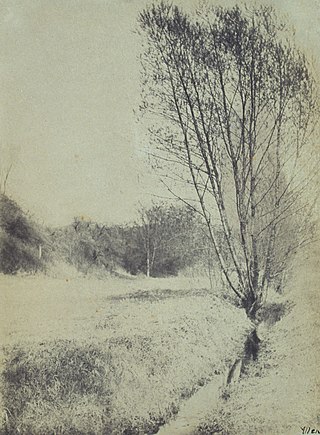
Mary Electa Allen (1858–1941) was an American photographer and co-founder of the Deerfield Society of Blue and White Needlework. She worked alongside her sister as a photographer from 1885 until 1920 capturing the life and landscape of Old Deerfield, among other subjects and paid commissions.
Memorial Hall Museum is a museum dedicated to preserving the history, art, and culture of the Deerfield, Massachusetts region as well as New England generally. Overseen by the Pocumtuck Valley Memorial Association (PVMA), it opened in 1880.
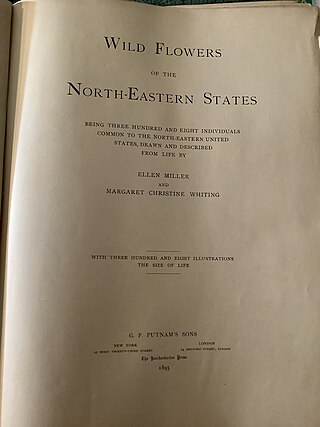
Margaret C. Whiting (1860-1946), was born in Chester, Massachusetts but lived much of her adult life in Deerfield, Massachusetts. She trained as an artist, and published an illustrated book with Ellen Miller on wild flowers. She ad Miller co-founded the Deerfield Society of Blue and White Needlework, where she contributed her skills as a designer and teacher, and provided leadership for the organization. She won a gold medal for her needlework from the 1915 Worlds Fair in San Francisco for its design and color.
Ellen Miller (1854-1929) was one of the founders of the Deerfield Society of Blue and White Needlework, with Margaret C. Whiting. She was a painter, designer, author, and needleworker. She was particularly skilled with dyeing, a talent she developed and practiced in her work for the Deerfield Society.

The Farrar-Mansur House is a historic house in Weston, Vermont built in 1797. It is within the boundaries of the Weston Village Historic District, which was listed on the National Register of Historic Places on August 29, 1985.
Inspired by the Arts and Crafts movement and the concept, organization, work and success of the Deerfield Society of Blue and White Needlework, citizens of Deerfield, Massachusetts began to create, show, and sell their craft and art works. Success in the 1899 Summer Exhibition in Deerfield, as well as two subsequent exhibitions, encouraged Madeline Yale Wynne, a founding member of the Chicago Arts and Crafts Society, to organize the Deerfield Society of Arts and Crafts in 1901, and to serve as its president. The Society changed its name in 1906 to the Society of Deerfield Industries.







